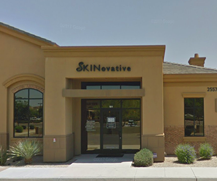Laser ablation versus radiofrequency ablation for
Laser ablation and radiofrequency ablation are new methods to treat varicose and spider veins. They are minimally invasive procedures (require no open surgery) and both use heat to shrink and shut off the varicose vein or the underlying abnormal deep vein that is causing the varicosity.
What is laser ablation?
Endovenous laser ablation (EVLT) uses a laser fiber that is inserted through the skin and directly into the varicose vein. Guided by ultrasound, the lining inside the faulty vein is slowly heated with focused light from a needle-thin catheter (flexible tube). This destroys the vein walls, causing the vein to seal off and eventually disappear.
The procedure takes less than 30 minutes to perform. It may involve trunks of superficial veins that radiate inflamed and swollen veins to the surface of the leg. The healthy veins, however, are not touched.
In some cases, ambulatory phlebectomy (removal of the vein through tiny punctures) or sclerotherapy (injection of a solution to make the vein shrink) is used with laser ablation to achieve optimal overall results.
There may be mild bruising, numbness and tenderness after the procedure that will resolve in a few days. Patients are encouraged to walk after the procedure. Most patients are able to return to work and resume near-normal activities the following day.
What is radiofrequency ablation?
Radiofrequency ablation (RFA) uses electrical energy to deliver heat to the abnormal vein to make it close and collapse. A radiofrequency catheter is introduced through a small opening in the skin, and radiofrequency waves are applied directly to the vein. Like laser ablation, it uses only local anesthesia and ultrasound visualization guides the placement of the small catheter.
The procedure takes approximately 30 to 60 minutes and the patient can go home on the same day. One is encouraged to walk and resume all normal activities.
Laser and radiofrequency ablation deliver the same clinical results
A recent study published in the British Journal of Surgery, involving 131 patients who received laser and radiofrequency ablation, suggested that radiofrequency ablation produced lesser post-procedural pain; however, both groups of patients reported the same clinical and quality-of-life improvements six weeks after treatment.

